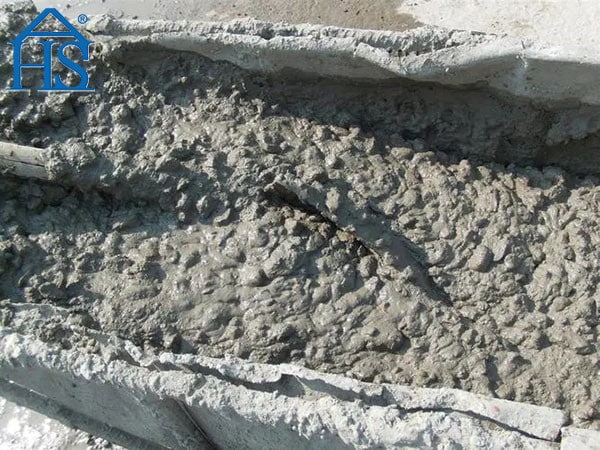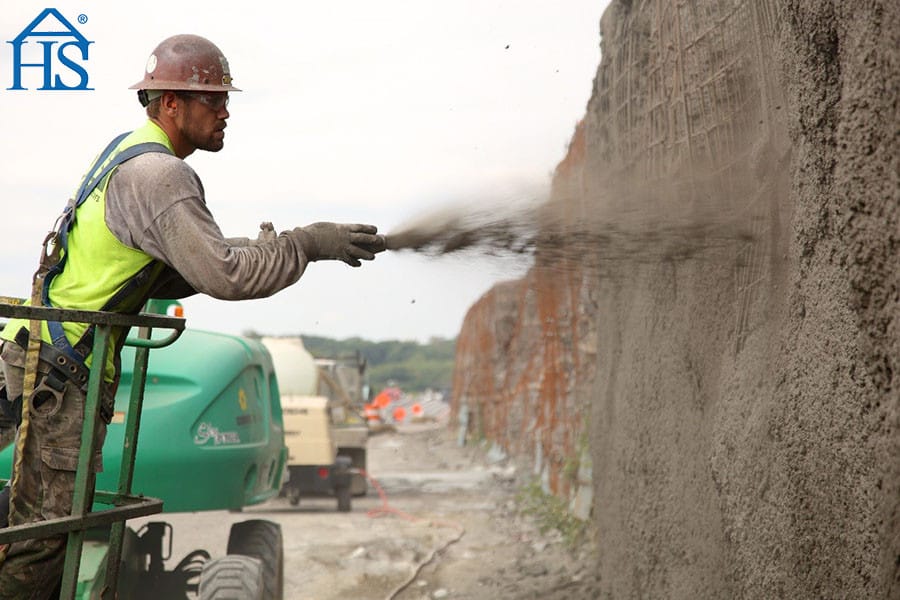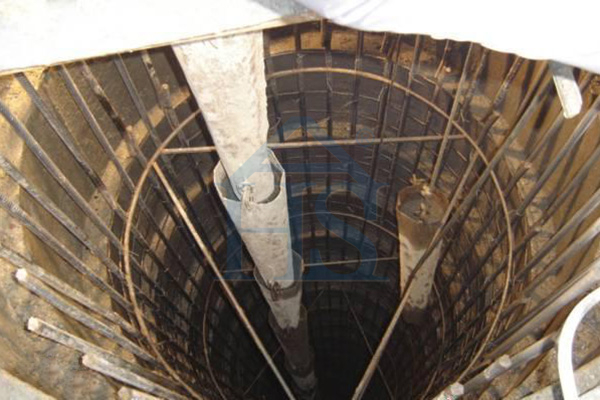What is Shotcrete?
Shotcrete is a generic name for a pneumatically applied mix of cement, sand and fine aggregate concretes. The mix is compacted and applied dynamically under high velocity. The technique was first used in 1907 and has been used for construction-reinforcing applications.
What is Silica Fume Shotcrete?
As new techniques evolved, silica fume was first added to shotcrete in the 1970s in Norway. As an additive to dry-mix and wet-mix shotcrete, silica fume has been used in different forms, namely, uncompacted silica fume, produced silica fume, compacted high density, compacted low-density silica fume, and as a slurry.
Micro silica fume is an admixture of high-performance minerals, including volcanic ash. It helps in improving the overall strength and durability of shotcrete. Its addition to wet-mix and dry-mix shotcrete greatly helps in tunnel lining, rock mass stability, and underground repairing of structures.
The benefits of using silica fume concrete
- Shotcrete containing silica fume has a much better cohesion among its molecules, thanks to the fine size of silica fume particles. It ensures that the applied layer stays on longer and minimizes maintenance costs
- Silica fume in shotcrete mix ensures thaw resistance and provides anti-freeze properties thanks to reduced permeability.
- Typical dry-mix shotcrete tends to spring-back as the sprayed mix hits the target surface. Silica fume helps reduce spring-back and helps improve the efficacy and economy of concrete material application.
- Low permeability in silica fume shotcrete helps prevent or significantly reduce corrosion in steel bars and wire mesh used in concrete restoration projects, especially when exposed to a chloride-intensive environment.
- Silica fume use in shotcrete directly helps increase the thickness of shotcrete applied in a single layer, thus improving overall production efficiency.
- Silica fume concrete has high compressive. Its addition in shotcrete increases strength at early and late stages.
- Silica fume shotcrete is well known for use in the reinforcement of existing structures, this property is attributed to the flexural strength of silica fume.
- Since the silica fume particles give out a high density material, silica fume shotcrete is highly resistant to chemical attacks by sulfates, nitrates, chlorides, alkali-aggregates, and acid reactions.
- Erosion resistance is increased for silica fume shotcrete. This property makes it perfect for use in repairing piles and breakwaters, especially those in tidal areas.
Micro silica fume powder for shotcrete mixes
Shotcrete is a mixture of cement and aggregate mortar or concrete. Shotcrete is sprayed on the surface at high speed with compressed air. There are two basic construction methods for shotcrete: wet mixing and dry mixing. In these two construction methods, silica fume additives are easy to add.
Dry mix shotcrete

As the name suggests, Shotcrete is not completely dry in its form factor. Some of its constituents may be slightly dampened before application. This helps reduce dust as a result of adding all components into the hopper for mixing and agitation. The mixture is fluidized using compressed air when it achieves the desired consistency.
Hence the mix in the feed bowl is pneumatically conveyed through the hose as a continuous shotcrete stream. As soon as the mix reaches the end nozzle of the hose, water is added to the mix. While compressed air induces pressure on the mixed molecules to tighten them up, a controlled quantity of water further compacts them.
Uses of dry mix shotcrete
- The quantity of shotcrete is small. Minor repair works like repairing parts of a busy road, or small patch repairs for tunnels make dry mix shotcrete their ideal go-to material.
- Dry mix shotcrete is useful when the actual application site is located far from the preparation site. The target locations may be inside mines or offshore sites. Moving wet mix shotcrete over long distances is not economically feasible.
Wet mix shotcrete

As the name suggests, water is added to the concrete mix before it is introduced to the exhaust hose. Water, along with shotcrete components, is continuously mixed before application. This can be done within mobile concrete rotary mixers on trucks. The mixture is hydraulically passed through the pipe and nozzle and sprayed over the target surface.
Silica fume is generally added at the preparation site, and the mix is then transported using ready-mixed concrete trucks. In some cases, the ready-mixed concrete is carried to the application site, and silica fume powder is added before application.
Reasons why wet mix shotcrete is used more frequently than dry mix shotcrete
More recently, the use of wet mix shotcrete has increased over dry mix shotcrete. The primary reasons for the shift are:
- Wet mix shotcrete is known to produce higher overall operational productivity and higher injection rates.
- Wet mix concrete boasts less dust during mixing and always gives out a uniform mix.
- Wet mix shotcrete has a higher water content and is mixed well for a long time before application. As water is introduced to the pressurized mix of concrete and compressed air at the nozzle, it may not mix well.
- The application of dry mix shotcrete can be tricky and requires trained professional staff to master the nozzle. If the suitable water-cement ratio is not maintained during the application, it can be catastrophic to the project. Wet mix shotcrete is prepared at mixing plants where the water-cement ratio can be easily controlled to achieve desired consistency.
Regardless of the process used for the preparation and application of shotcrete, the final product for both dry and wet shotcrete is pretty similar. However, as discussed above, the application of both mixes differs based on their utility. Dry mix shotcrete is preferred as large trucks can not be deployed inside mines. Hence, selecting one process over the other depends on site-specific situations.
Ensuring the best application of silica fume shotcrete
Your final silica fume shotcrete application quality depends mainly on your procedure.
- As a thumb rule, shotcrete should never be applied to a dry, frozen, or dusty surface.
- Your team will need to prepare the surface before beginning with the shotcrete application. You may use abrasives to clean up the surface, followed by water jets that free the surface from dust or lost rocks.
- The typical application procedure starts with spraying at the bottom of the surface in circular motion and slowly moving up as shotcrete ‘glazing’ takes place.
- Spray personnel should avoid over spraying at any site and make it a point not to apply fresh layers onto rebound shotcrete.
- With sufficient air pressure available, the typical shotcrete shooting distance should be about 1 to 1.5 meters.
- The work area, especially the ambiance of the spray personnel, should be well-lit and adequately ventilated
- Spraying, specifically overhead spraying, can be tiring and challenging for human labor; you may consider deploying robotic systems for the same.
- When applying shotcrete on rock masses, care should be taken to leave passages for excess moisture release from within the rock. The same is essential as it provides natural stress release for the rock and keeps the shotcrete application low on maintenance.
It makes sense to use 99% content micro silica powder, especially when building white houses, as in the Middle East. Silica fume shotcrete offers superior economy, time savings, and efficiency in spray application.
The outstanding bonding strength of silica fume in shotcrete makes it suitable for dry and wet shotcreting. It leads to reduced rebound losses and relatively thicker applications. A single pass can provide up to 12 inches of coat thickness. Its high electrical resistivity and low permeability make it a well-suited candidate for all-weather applications.
Specific advantages of having silica fume in shotcrete
Silica fume shotcrete is genuinely the future of construction projects. Silica fume is a fine particle material with high compressive strength. As an ingredient for shotcrete, it helps achieve greater cohesion and adhesion, among other components. It provides durability to the end application and is highly resistant to chemical attacks. In construction applications, it helps reduce the dosage of coagulants.
The high-performance silica fume shotcrete advantages
- Better workability and less slump loss
- Resistance to corrosion caused due to alkaline conditions
- Lesser spring back thanks to the ability to bring down the ground ash in shotcrete
- Highly durable, low maintenance end application
- Late intensity coupled with high early strength
- Better thickness for each applied layer
Silica Fume Manufacturer – Henan Superior Abrasives
Henan Superior Abrasives Co.,Ltd has more than 20 years of experience as a manufacturer of silica fume. We are the leading supplier of high-performance silica products from China. We provide undensified silica fume, densified silica fume in different configurations that suit your specific project needs.
HSA Silica Fume Products
We have the following configurations available to ship from our plants in China:
- 85% Undensified Silica Fume
- 92% Undensified Silica Fume
- 94% Undensified Silica Fume
- 96% Undensified Silica Fume
- 99% Undensified Silica Fume
- 85% Densified Silica Fume
- 92% Densified Silica Fume
- 94% Densified Silica Fume
- 96% Densified Silica Fume
Read More Visit: https://hsamaterial.com/silica-fume
HSA Silica Fume Packaging
We ship the above materials in 1000kg plastic woven bags and 10kg and 20 kg soluble paper bags. On request, we can also pack the materials in plastic woven bags in smaller quantities. We use advanced production equipment along with international standard experiment instruments. Our high-standard materials find their use in different projects all over the world. We stay committed to delivering the best materials with prompt service.





